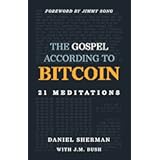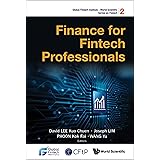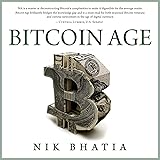Did you know that an estimated 90% of new Bitcoin traders face common pitfalls that can lead to significant losses? For many, the world of cryptocurrency trading, particularly Bitcoin, can seem daunting with its complex terminology, volatile markets, and confusing charts. If you’ve been watching the insightful video above, you’re already taking a crucial first step toward demystifying this exciting landscape. This comprehensive guide will build upon the video’s foundational knowledge, providing deeper explanations, practical examples, and actionable insights to help you navigate the thrilling but challenging journey of Bitcoin trading for beginners.
Our goal is to translate the intricacies of the crypto market into “plain English,” equipping you with the essential understanding to make informed decisions. We’ll delve into everything from the core differences between trading and investing to mastering exchange terms, reading price graphs, and crucially, avoiding the mistakes that often trip up newcomers. Let’s embark on this learning journey together.
Understanding Bitcoin Trading: A Beginner’s Perspective
Firstly, it’s vital to distinguish between Bitcoin trading and Bitcoin investing, as these terms are often used interchangeably but represent fundamentally different strategies. Investing in Bitcoin typically involves buying the digital asset with a long-term outlook. Investors, often called “HODLers” (a term coined from a 2013 typo on the Bitcoin Talk forum), believe in the underlying technology, ideology, or team behind Bitcoin and are prepared to weather market fluctuations, expecting the price to rise significantly over months or even years.
In contrast, Bitcoin trading focuses on short-term price movements to make quick profits. Traders view Bitcoin as a tool to capitalize on volatility, buying low and selling high within shorter timeframes. While investors might hold Bitcoin for years, traders could hold it for minutes, hours, or days. Many individuals successfully engage in both investing and trading simultaneously, using different portions of their portfolio for each strategy.
Why is Bitcoin Trading So Popular?
The surge in interest in cryptocurrency trading, especially Bitcoin, isn’t just a fleeting trend. Several inherent characteristics make Bitcoin an attractive asset for traders:
- High Volatility: Bitcoin is renowned for its dramatic price swings. This volatility, while risky, offers frequent opportunities for profit if traders can correctly anticipate market movements. For example, a 10% price swing in traditional markets might be rare, but it’s not uncommon in crypto within a single day.
- 24/7 Market Access: Unlike traditional stock or commodity markets that have opening and closing hours, the Bitcoin market operates continuously, 24 hours a day, seven days a week. This constant availability means traders can react to news or price changes at any time, from any global location.
- Lower Barriers to Entry: The decentralized and relatively unregulated nature of the crypto market means it’s generally easier to start trading. While regulations are evolving, the initial identity verification processes can be simpler than those for traditional financial markets, attracting a broader audience.
Different Styles of Bitcoin Trading
Not all traders operate the same way. The video briefly mentioned a few types, but let’s expand on them. Understanding these distinct approaches can help you find a strategy that aligns with your personality and time commitment:
- Day Trading: This involves opening and closing multiple trades within a single trading day, aiming to profit from small, short-term price movements. Day traders typically monitor charts for many hours, exiting all positions before the market closes for the day (though in crypto, there’s no official close). It requires intense focus and quick decision-making.
- Scalping: An even more aggressive form of day trading, scalping attempts to make numerous tiny profits from very small price changes. Scalpers execute dozens or even hundreds of trades daily, holding positions for just seconds or minutes. The idea is that accumulating many small gains limits overall risk and builds significant profit over time, like “picking up pennies in front of a steamroller.”
- Swing Trading: This strategy seeks to capture gains over a period of several days or weeks, riding the “swings” of price cycles. Swing traders identify potential price movements, enter a trade, and hold it until the momentum fades. They focus on the bigger picture and don’t need to constantly monitor screens. For instance, a swing trader might buy Bitcoin at the start of an anticipated upward trend and sell after it peaks and begins to consolidate.
Beyond these, there’s also position trading (longer-term, similar to investing but still based on market trends) and algorithmic trading (using automated bots). The key is to find a style that suits your risk tolerance and available time.
Analyzing the Market: Fundamental vs. Technical Analysis
So, how do traders attempt to predict price movements? Two primary methodologies are employed:
- Fundamental Analysis (FA): This approach looks at the “big picture” to determine an asset’s intrinsic value. For Bitcoin, FA involves evaluating the overall cryptocurrency industry, regulatory news (e.g., China’s stance on crypto, SEC approvals), technological developments (like the Lightning Network’s progress), macroeconomic factors, and public sentiment. A fundamental analyst might predict a price drop if a major country announces a ban on Bitcoin, or a rise if a large financial institution adopts it.
- Technical Analysis (TA): In contrast, TA attempts to predict future price movements by studying past market data, primarily price and volume. Technical analysts believe that all relevant information is already reflected in the price action. They look for patterns, trends, and indicators on charts to identify potential entry and exit points. For example, if Bitcoin has historically rebounded after hitting a certain price point, a technical analyst might expect it to do so again.
Neither method offers a crystal ball. However, a balanced approach, combining insights from both fundamental and technical analysis, often yields the most robust trading decisions. For instance, a trader might use FA to identify promising cryptocurrencies and then TA to pinpoint the optimal time to buy or sell.
Mastering Essential Bitcoin Trading Terms
Navigating a crypto exchange requires understanding a new vocabulary. Let’s break down some of the most confusing terms you’ll encounter.
Understanding Exchanges and Order Books
Bitcoin exchanges are online platforms where buyers and sellers are automatically matched. It’s crucial to differentiate these from direct Bitcoin sellers (like CoinMama, which typically charges higher fees) or peer-to-peer marketplaces (like LocalBitcoins, where individuals interact directly). On an exchange, you’ll see an “order book,” which is a real-time list of all buy and sell orders for a specific asset.
- Bids: These are buy orders, representing the prices at which traders are willing to purchase Bitcoin. The highest bid price is typically displayed at the top of the buy side of the order book.
- Asks (or Offers): These are sell orders, showing the prices at which traders are willing to sell Bitcoin. The lowest ask price is usually at the top of the sell side.
- Last Traded Price: When people refer to “Bitcoin’s price,” they are generally talking about the price of the last completed trade on a specific exchange. There is no single global Bitcoin price; prices can vary slightly between exchanges and countries due to differing supply and demand.
- High/Low: These figures indicate the highest and lowest prices Bitcoin has reached within a specific timeframe, commonly the last 24 hours. They provide a quick snapshot of volatility.
- Volume: This refers to the total amount of Bitcoin traded within a given period (e.g., 24 hours). High trading volume often accompanies significant price trends, confirming their strength. Conversely, low volume during a price movement might suggest a weak or temporary trend. A healthy uptrend, for example, is typically characterized by high volume during price increases and lower volume during pullbacks.
Types of Orders You Can Place
When you’re ready to trade, you’ll need to choose the type of order to execute:
- Market Order (Instant Order): This order is fulfilled immediately at the best available price in the order book. If you place a market order to buy 5 Bitcoin, the exchange will automatically buy from the cheapest sellers until your 5 Bitcoin are acquired. Be cautious, as this might mean purchasing different portions at slightly varying prices, potentially higher than you initially expected, especially in illiquid markets.
- Limit Order: With a limit order, you specify the exact price at which you want to buy or sell Bitcoin. For example, setting a limit order to buy 1 Bitcoin at $10,000 means your order will only execute if the price drops to or below $10,000. If the price never hits your specified level, the order may only be partially fulfilled or not at all. This gives you greater control over price but no guarantee of execution.
- Stop-Loss Order: This is a crucial risk management tool. A stop-loss order tells the exchange to sell your Bitcoin automatically if its price drops to a predetermined “stop price.” Its primary purpose is to limit potential losses on a trade. Once the stop price is hit, the order converts into a market order, selling your coins at the best available price to prevent further declines. For instance, if you buy Bitcoin at $11,000 and set a stop-loss at $10,500, your Bitcoin will be sold if the price falls to $10,500, capping your loss.
Maker vs. Taker Fees
Understanding maker and taker fees is essential for managing your trading costs. Exchanges use this model to incentivize liquidity:
- Maker Fees: You become a “market maker” when you place a limit order that isn’t immediately matched by an existing order in the order book. By adding liquidity (creating a new order) to the exchange, you’re helping “make the market.” Exchanges typically charge lower fees for makers to encourage more orders. For example, if the current lowest ask is $11,000 but you place a limit order to buy at $10,000, you’re a maker.
- Taker Fees: You become a “market taker” when you place an order (often a market order, or a limit order that is immediately matched) that “takes” existing liquidity from the order book. You are instantly fulfilling someone else’s maker order. Exchanges generally charge higher fees for takers because you are removing orders that contribute to the market’s depth. If you place a limit order to buy at $12,000 when the lowest ask is $11,000, your order will be instantly filled, and you will be a taker.
Decoding Bitcoin Price Charts for Beginners
Price charts, particularly Japanese candlesticks, are the language of technical analysis. Originating from 17th-century Japanese rice trading, these visual tools offer a wealth of information at a glance.
Reading Japanese Candlesticks (OHLC)
Each “candlestick” on a chart represents the price action over a specific time period (e.g., 1 minute, 1 hour, 1 day). They provide four key data points, often remembered as OHLC:
- Open: The price at the beginning of the time period.
- High: The highest price reached during the period.
- Low: The lowest price reached during the period.
- Close: The price at the end of the time period.
The “body” of the candle (the wide part) shows the open and close prices, while the “wicks” or “shadows” (the thin lines extending from the body) indicate the high and low. The color of the candle is crucial:
- Green Candle (Bullish): Indicates that the closing price was higher than the opening price. The price went up during that period. The open is at the bottom of the body, and the close is at the top.
- Red Candle (Bearish): Indicates that the closing price was lower than the opening price. The price went down during that period. The open is at the top of the body, and the close is at the bottom.
Understanding Market Sentiment: Bulls and Bears
These animal metaphors are central to market psychology:
- Bull Market: Named after a bull’s upward thrust of its horns, a bull market signifies an upward trend in prices. Most candlesticks will be green, indicating general optimism and buying pressure. Traders in a bull market often look for opportunities to buy.
- Bear Market: Named after a bear’s downward swipe of its paws, a bear market indicates a downward trend in prices. Most candlesticks will be red, reflecting pessimism and selling pressure. Traders in a bear market might look for opportunities to sell or short-sell.
Support and Resistance Levels
These are critical concepts for identifying potential price turning points:
- Resistance Level: Imagine a virtual “ceiling” that the price struggles to break above. A resistance level is a price point where selling pressure is strong enough to prevent the price from rising further. For example, if Bitcoin repeatedly fails to climb past $30,000, then $30,000 acts as a resistance level. This often occurs because many sell orders are placed around that specific price. Historically, the $1,000 mark was a strong resistance level until 2017, after which $10,000 became a significant psychological barrier.
- Support Level: Conversely, a support level acts as a virtual “floor,” a price point where buying pressure is strong enough to prevent the price from falling further. If Bitcoin consistently bounces back up after hitting $25,000, then $25,000 is a support level. This is often due to a high concentration of buy orders at that price.
These levels are often strongest when they are round numbers (e.g., $10,000, $20,000, $50,000) because inexperienced traders tend to place orders at these psychologically significant whole numbers, creating dense clusters of buy or sell interest.
Avoiding Common Bitcoin Trading Pitfalls
While the allure of quick profits in Bitcoin trading is strong, the reality is that many beginners make easily avoidable mistakes. Being aware of these can significantly improve your chances of success.
- Risking More Than You Can Afford to Lose: This is arguably the biggest mistake. Trading is inherently risky, and it’s entirely possible to lose all the money you allocate to it. Only invest funds that you are genuinely comfortable losing, as this prevents emotional decision-making. If you find yourself trading with money you need for rent or essentials, you’re jeopardizing your financial stability.
- Trading Without a Clear Action Plan: Many new traders enter a trade without understanding their “why” – why they’re buying, when they plan to sell for profit, or when they’ll cut their losses. A clear trading plan should outline your entry points, profit targets (take-profit levels), and stop-loss levels *before* you execute a trade. Stick to this plan rigorously.
- Leaving Funds on an Exchange Unnecessarily: While exchanges are convenient for active trading, they are also centralized points of failure. If an exchange is hacked, goes offline, or ceases operations, your funds could be lost. Always move any Bitcoin or fiat currency not actively being used for trading into a secure personal Bitcoin wallet or your bank account. Cold storage options, like hardware wallets, offer the highest level of security for significant holdings.
- succumbing to Fear and Greed: Emotions are powerful drivers in trading. Fear can lead you to prematurely close a profitable trade due to a negative news article or a temporary price dip, missing out on further gains. Greed, often fueled by the “fear of missing out” (FOMO) when prices are soaring, can cause you to enter trades too late, hold onto losing trades too long, or take on excessive risk. Recognize that these emotions are natural, but develop strategies (like sticking to your pre-defined trading plan) to neutralize their influence.
- Neglecting Continuous Learning and Adaptation: The crypto market is dynamic and constantly evolving. What worked yesterday might not work today. Successful traders commit to lifelong learning, analyzing their trades (both winners and losers), adapting their strategies, and staying informed about market developments. Don’t assume quick success; view trading as a skill that requires dedication and persistent refinement, just like any other professional endeavor.
To truly excel in Bitcoin trading, a significant investment of time, effort, and continuous learning is paramount. There are no shortcuts or guarantees of “quick easy money.” However, for those committed to developing their skills and understanding the market’s nuances, the potential rewards are significant. Always remember to manage your risks, educate yourself thoroughly, and approach the market with discipline and a well-thought-out plan. This foundational knowledge is just the beginning of your journey.







